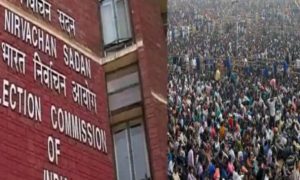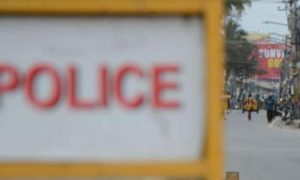The Pradhan Mantri Awas Yojana (PMAY), a flagship housing credit-linked subsidy scheme launched by the BJP government in 2015, aims to provide affordable housing to economically weaker sections and lower-income groups nationwide. The initiative targets economically weaker sections (EWS), lower-income groups (LIG), and middle-income groups (MIG) across both urban and rural areas.
PMAY consists of two primary components: PMAY-Urban for urban areas and PMAY-Grameen or PMAY-Rural for rural areas. PMAY-Urban addresses the housing needs of the urban poor, while PMAY-G/R caters to the requirements of the rural poor.
Eligible beneficiaries under PMAY can access subsidies on home loans, direct financial aid for house construction, in-situ rehabilitation of slum dwellers, and credit-linked subsidies for the middle-income bracket.
The program is funded through a combination of central government allocations, contributions from state governments, and involvement from the private sector.
A significant aspect of PMAY-Urban is its emphasis on women’s empowerment within the EWS and Lower Income Group (LIG) categories. Unlike previous schemes, PMAY-U mandates that the house must be owned or co-owned by the female head of the beneficiary family.
The Union government has approved three crore new houses under the PM AWAS.
According to government data, between 2015-2024, under PMAY-U, over 114 lakh houses have been grounded for construction while more than 84 lakh houses have already been completed and delivered to beneficiaries.
A total of Rs 8.07 lakh crore investment has been done in projects, Rs 2 lakh crore has been approved by the Centre and Rs 1.64 lakh crore funds have been released by the Centre.
Read More: Credit card payment: Users can’t use CRED, PhonePe, Amazon Pay, Paytm to make payments. Know more
PM-AWAS Yojana – Eligibility Criteria
To qualify for the PMAY scheme, applicants must adhere to specific eligibility criteria:
-The beneficiary family should not own a pucca house, either under their name or any family member’s name anywhere in India.
-They should not have received central assistance from any housing scheme by the Government of India or state government previously.
-They should not have availed of PMAY-Credit-Linked Subsidy Scheme (CLSS) benefits from any primary lending institutions (PLIs).
-For new property ownership or co-ownership, it is mandatory for women beneficiaries but not required for existing properties.
-Possession of Aadhar card is mandatory for all applicants.
-Applicants must also have an annual income not exceeding Rs 18 lakh, and their family members should not have utilized any other government housing schemes.
-Government employees are eligible for the PMAY scheme provided they meet all eligibility criteria.
Read More: Paytm launches ‘Health Saathi Plan’ at just ₹35 per month. Five things to know
Primary beneficiaries of PMAY
Economically Weaker Section (EWS)
Lower Income Group (LIG)
Middle Income Group I (MIG I)
Middle Income Group II (MIG II)
Applicants from SC, ST and OBC categories and women from EWS and LIG income groups can also apply for PMAY.
Categorisation of PMAY beneficiaries
The PMAY scheme categorises applicants based on income levels, each with defined eligibility requirements and associated benefits:
-Economically Weaker Section (EWS): Annual income up to Rs 3 lakh, with a maximum house size of 30 sq. m.
-Lower Income Group (LIG): Annual income between Rs 3 lakh and Rs 6 lakh, with a maximum house size of 60 sq. m.
-Middle Income Group I (MIG I): Annual income between Rs 6 lakh and Rs 12 lakh, with a maximum house size of 160 sq. m.
-Middle Income Group II (MIG II): Annual income between Rs 12 lakh and Rs 18 lakh, with a maximum house size of 200 sq. m.
Read More: Ayushman Bharat Yojna: How To Apply, Eligibility, Website; A Step-By-Step Guide
Documents needed for PM-AWAS Yojana
Here are the documents required for Pradhan Mantri Awas Yojana (PMAY), categorised for self-employed and salaried individuals:
Identity Proof:
Self-employed: Passport, Driving License, Voter Card, Aadhar Card, Government-issued ID card with photo, Verified letter from a government official with photograph.
Salaried: Voter Card, Driving License, Aadhar Card, Passport, Government-issued ID card with photo, Verified letter from a government official with photograph.
Address Proof:
Self-employed: Passport, Driving License, Voter ID card, Ration Card, Aadhar Card, Electricity bill, Utility bill, Telephone bills, Bank Statements showing address, Credit Card Statements, Property tax paid receipt, Verified letter from a government official with photograph.
Salaried: Driving License, Passport, Voter ID card, Aadhar Card, Utility bill, Electricity bill, Telephone bills, Ration Card, Self/Family Pension payments orders, Letter from employer on company letterhead, Bank Statement from post office saving account, Bank Statements showing address, Credit Card Statements.
Along with these, Copy of Life Insurance Policy certificate, Notarized Rent Agreement, Leave and license agreement from employers allocating official accommodations, Property tax paid receipt, Verified letter from a government official with photograph.
Income Proof:
Self-employed: Balance sheet and profit and loss statement, Last six months statement of current account, Income tax returns for past two years.
Salaried: Previous 6 months bank statement, Previous 2 months salary slip, Latest Form 16/ITR.
Property Documents:
Copy of the Allotment Letter, Copy of Agreement to Sale, Copy of complete chain property documents, Copy of Receipt of payment.
These documents are necessary for applying under the Pradhan Mantri Awas Yojana (PMAY) scheme, tailored for both self-employed and salaried individuals seeking housing assistance.
Documents needed for PM AWAS Yojana
To apply for the Pradhan Mantri Awas Yojana (PMAY), follow these steps:
-Go to the official PMAY website and navigate to the “Menu” tab. Select the “Citizen Assessment” option.
-Enter your Aadhaar number when prompted. Aadhaar is mandatory for PMAY applications.
-Fill out the application form with all required details. This includes personal information, income details, bank account information, and more. Ensure all information is accurate and complete.
-Double-check all the information filled in the application form for accuracy. Make sure everything is correctly entered before proceeding.
-After verifying the details, click on the “Save” option to submit the form. Upon successful submission, you will receive a unique application number. Make a note of this number for future reference.
-Download the filled-in application form from the website. This form will serve as your reference and proof of application.
-Visit a nearby Common Service Centre (CSC) or designated financial institution offering PMAY services. Submit the printed application form along with all required supporting documents.





































